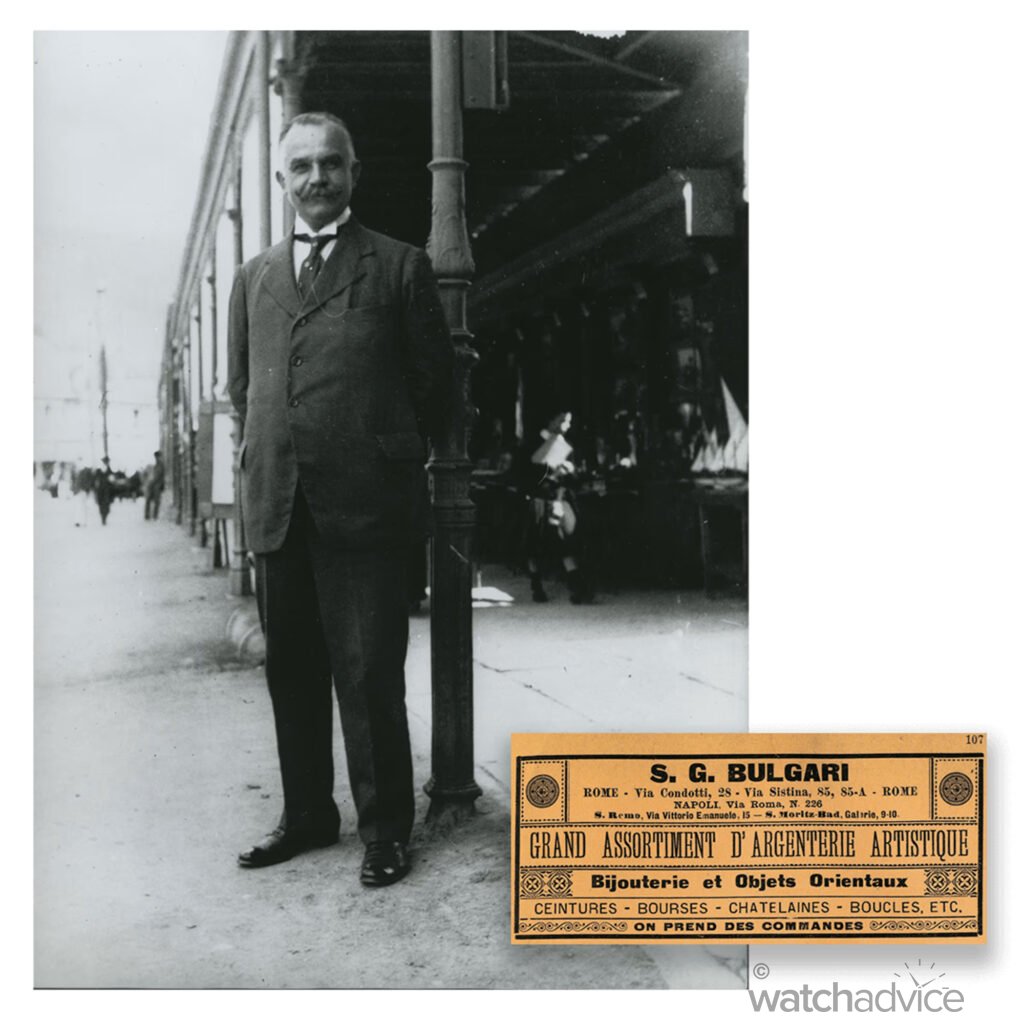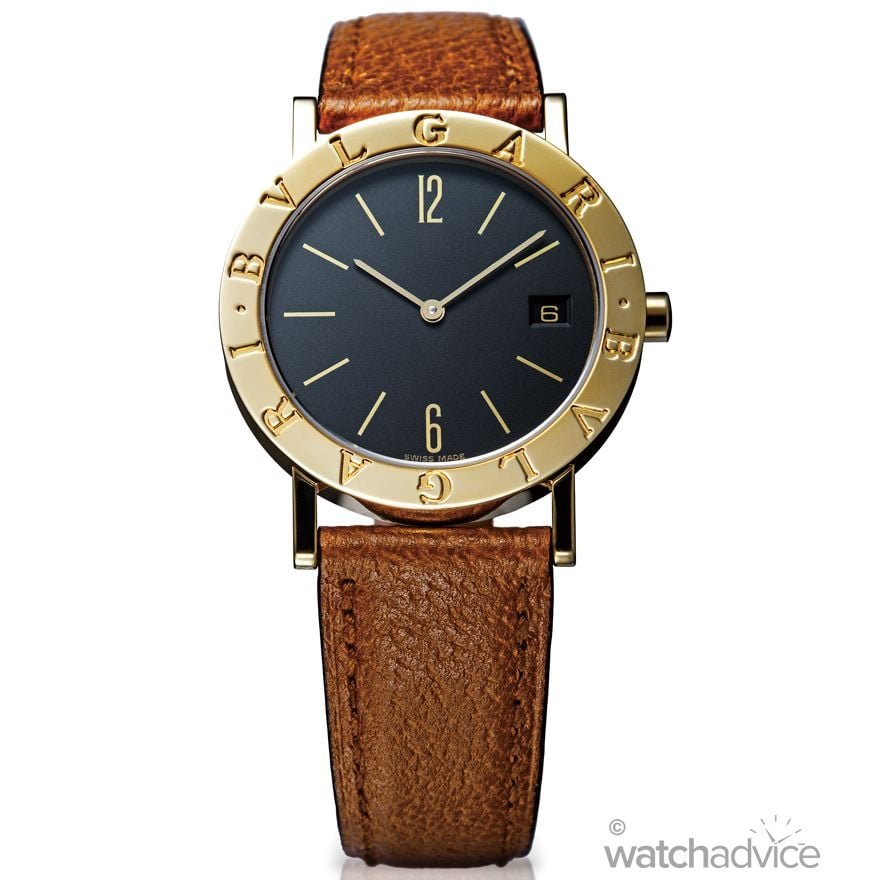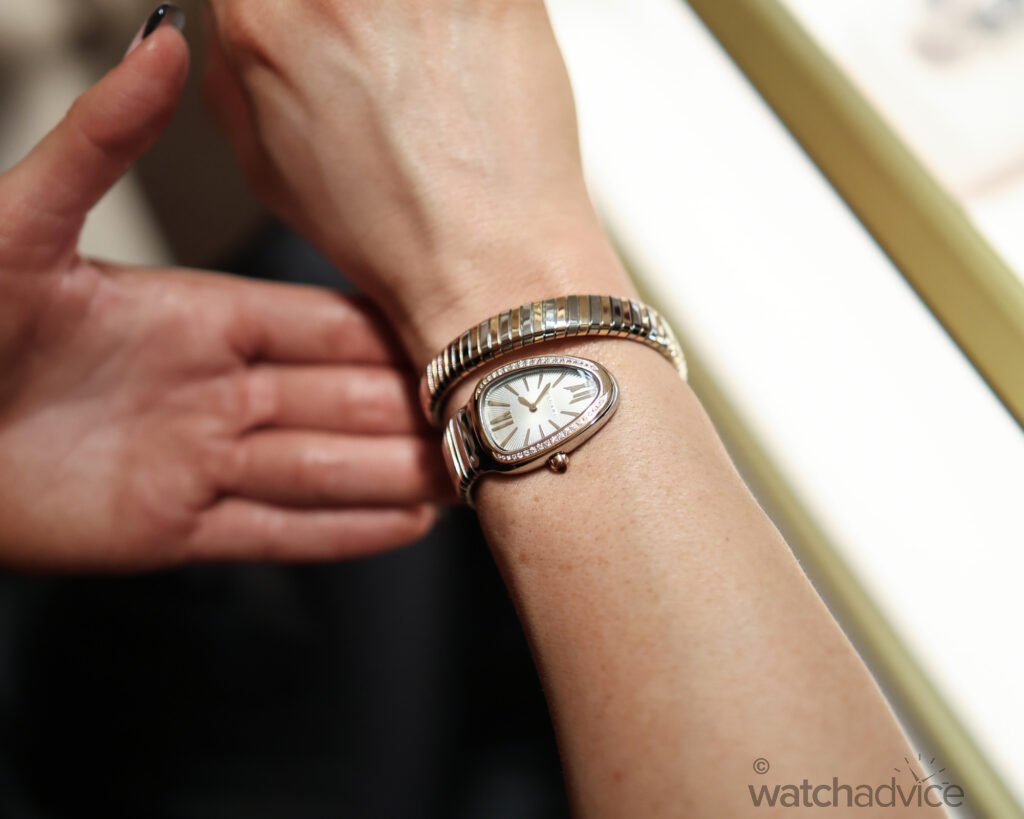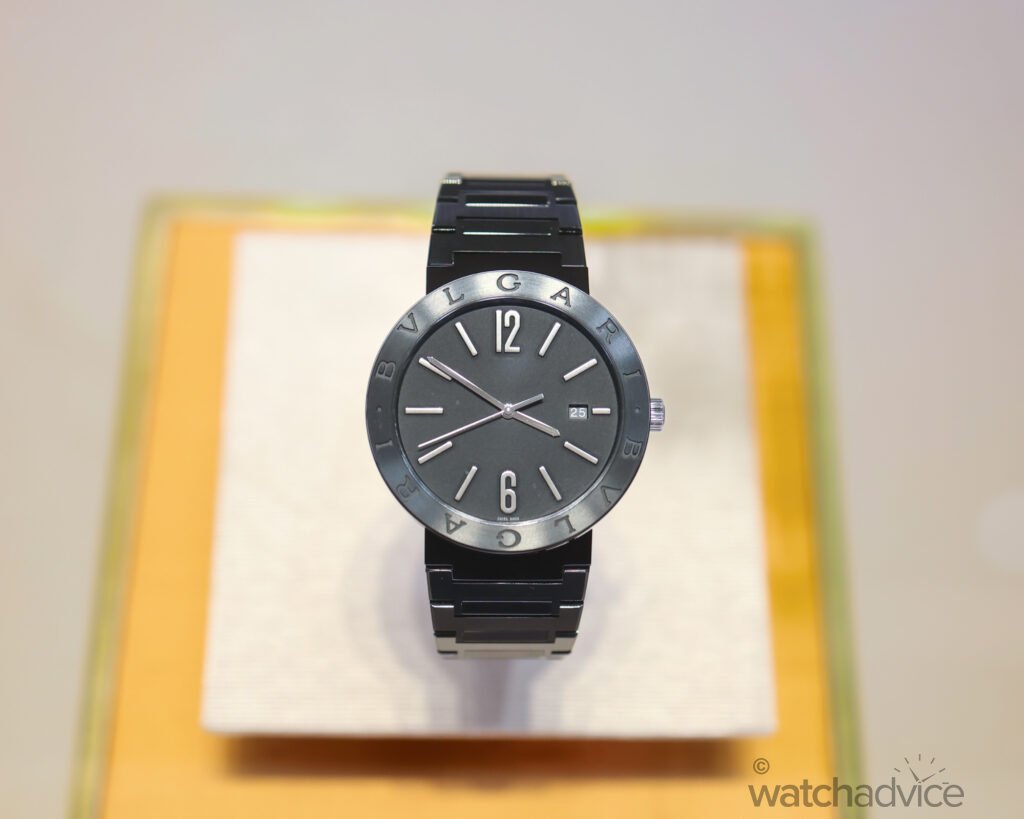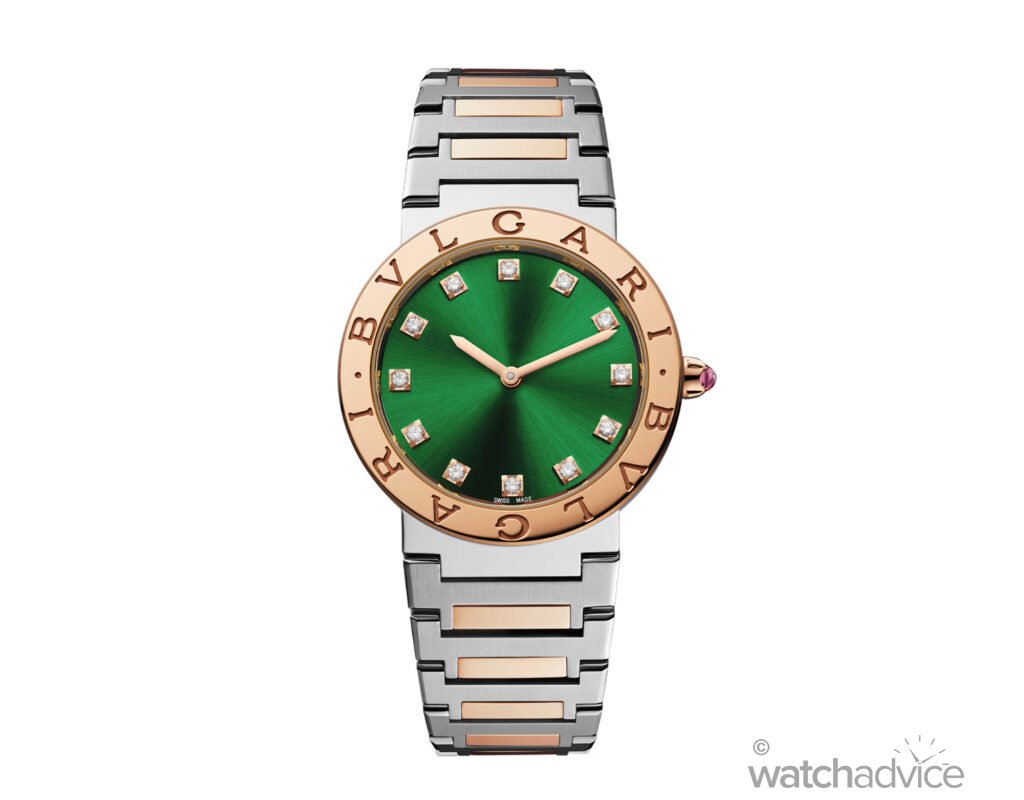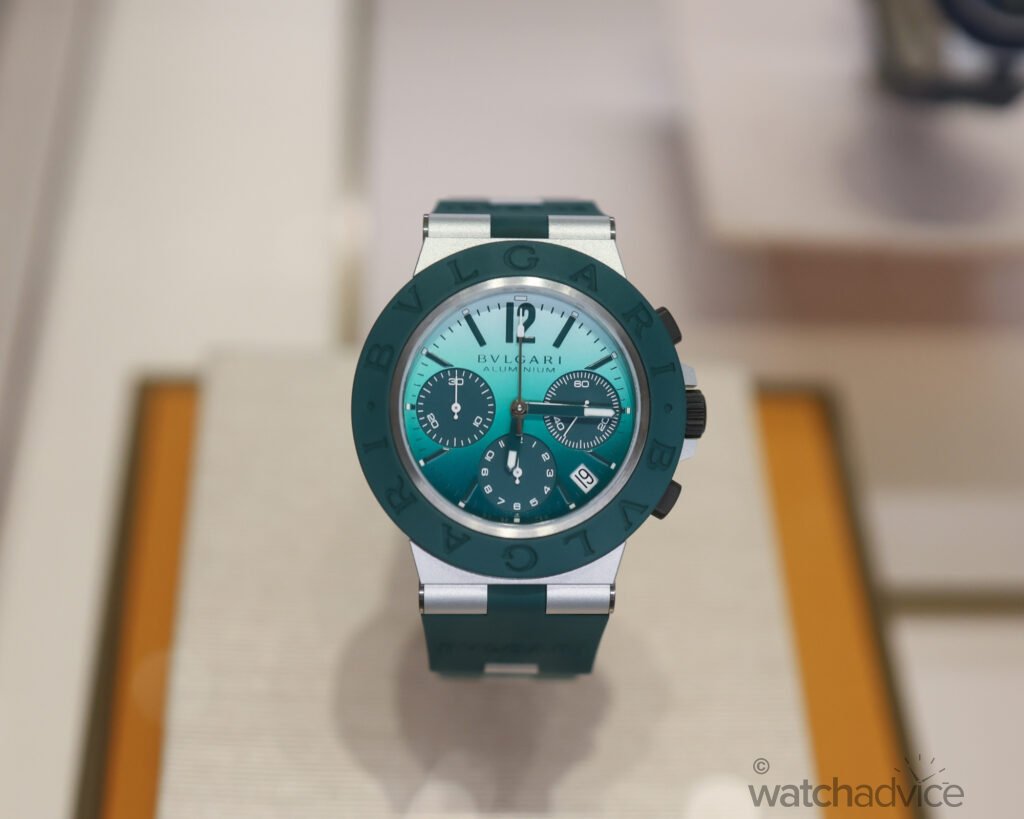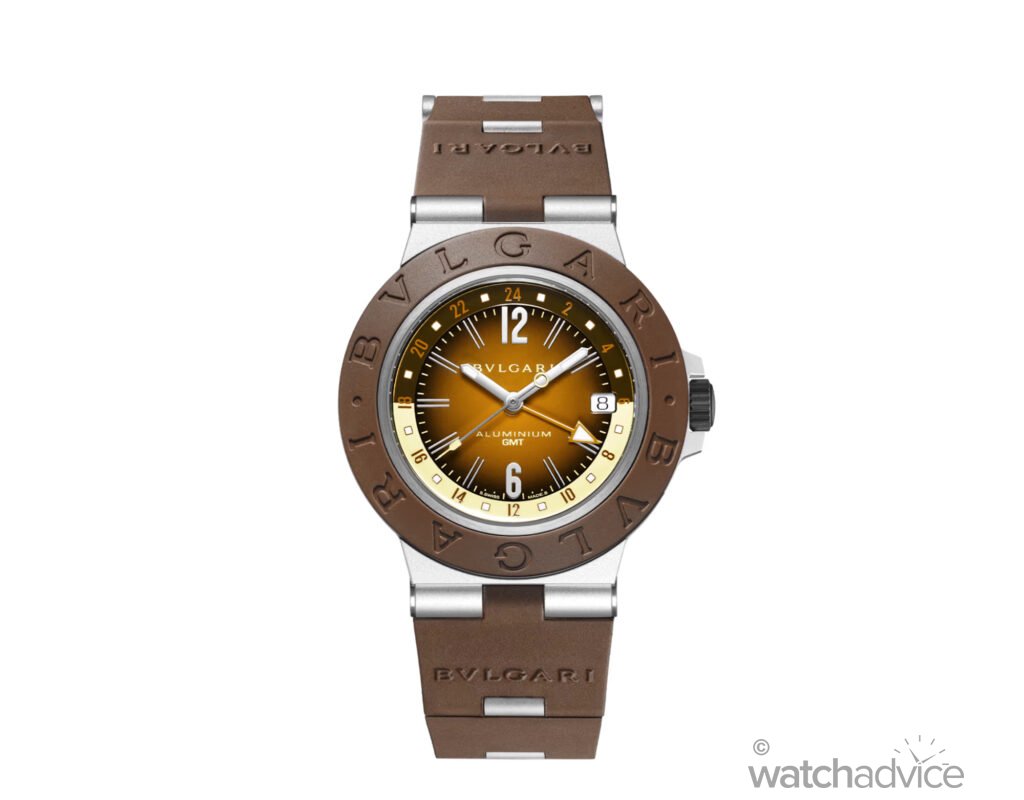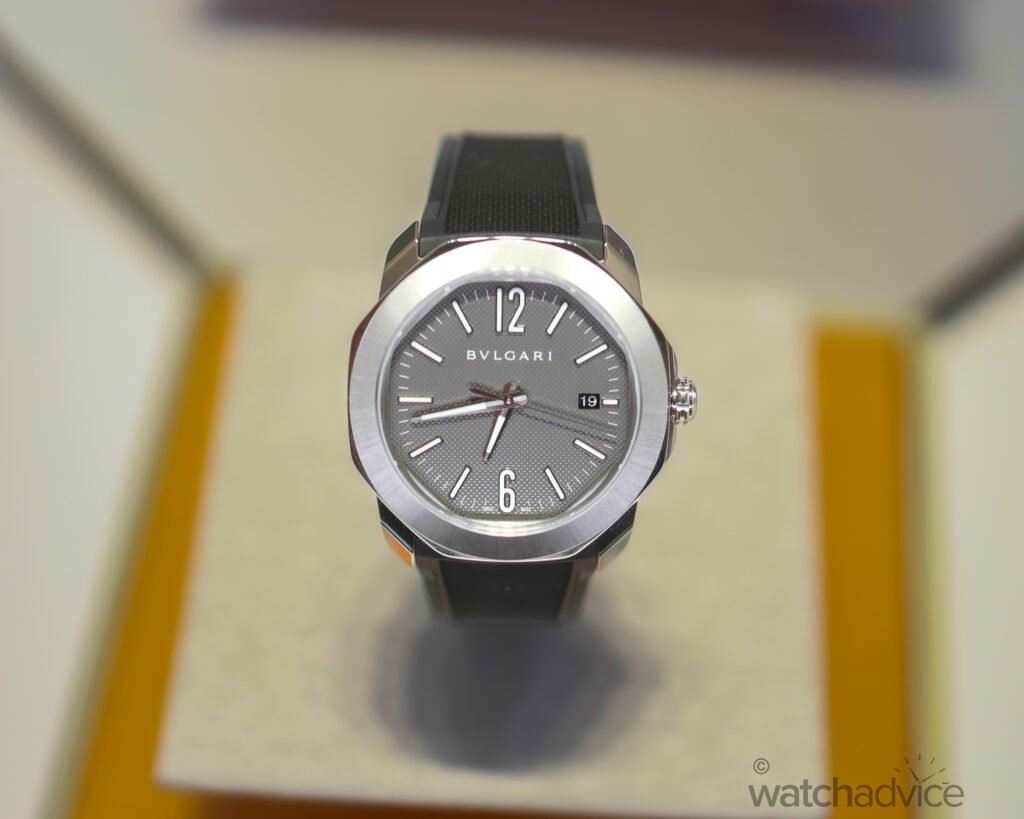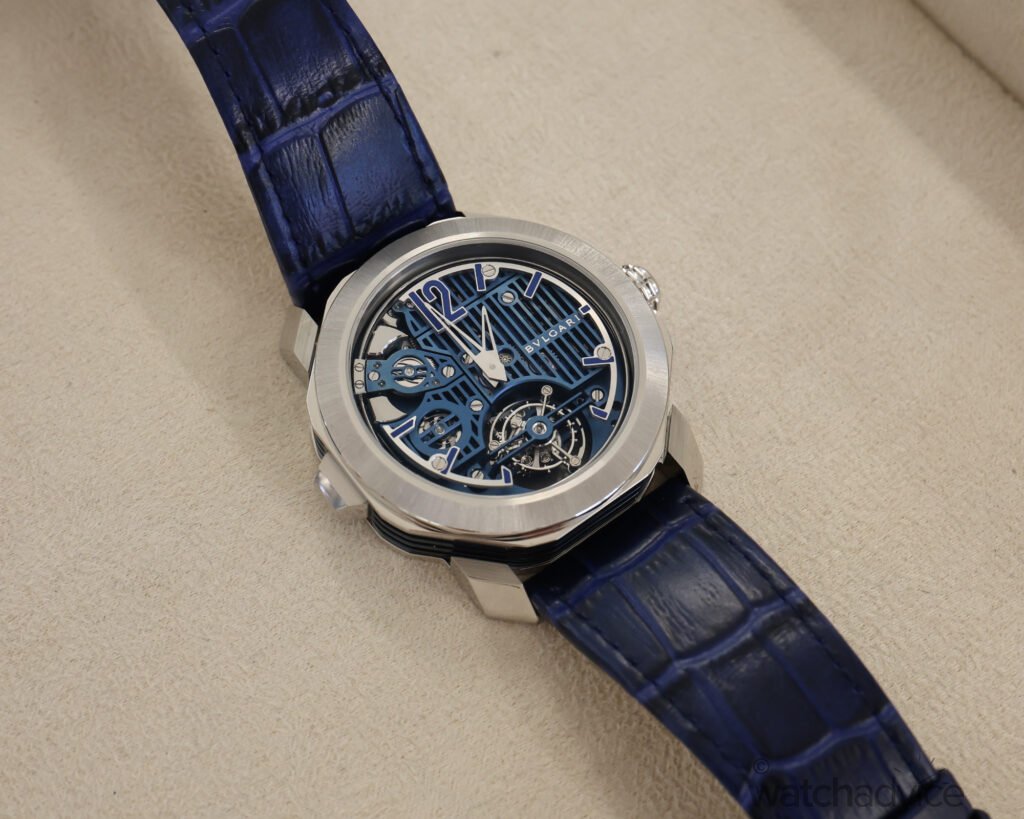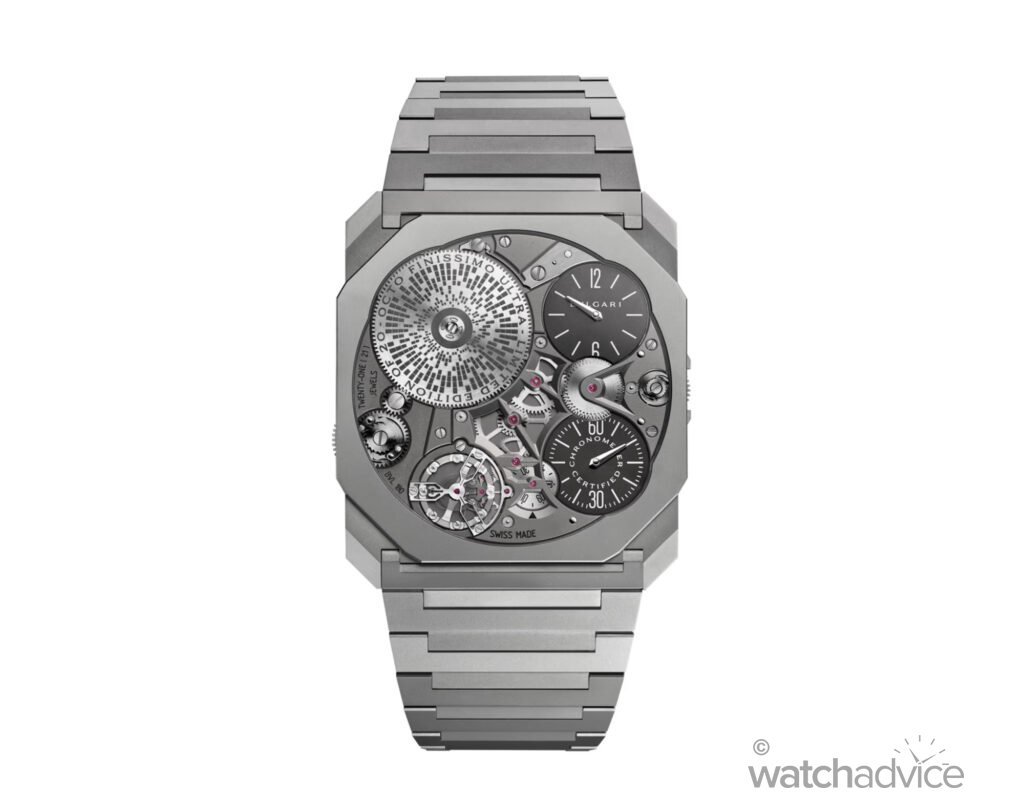Bvlgari isn’t just making watches, it’s rewriting the rules of modern horology. From iconic design language to record-breaking innovation, this is where jewellery meets watchmaking, and where tradition meets transformation!
When you think of luxury watchmaking, you’re mind would immediately travel to Switzerland, and with good reason too. The Swiss have long dominated the watchmaking industry with their technical mastery and exceptional brands. However, what is often overlooked are the brands that have risen out of Italy. While not traditionally a watchmaking powerhouse, Italy have produced a few bold exceptions that certainly defy convention.
Among them, one brand name stands tall: Bvlgari. Being one of the few Italian-bon maisons to make a serious impact and mark in the world of horology, Bvlgari brings forth Rome’s artistic grandeur with Swiss precision. This rare and refreshing take on watchmaking is exactly what the industry needs: a brand that forms its own identity while paving its path through innovation that forces other brands to step up their game.
Unlike Bvlgari’s competition, the brand didn’t emerge from a valley of watchmakers or generations of dial specialists. Bvlgari was born from a deep tradition of Roman jewellery craftsmanship. While it may not have initially had the expertise and skills as said peers, Bvlgari has been able to, in just a few short decades, carve out a unique position for itself: part designer, part disruptor, and part record-breaker. The brand’s approach to watchmaking isn’t about recreating traditional timepieces, but rather about reimagining what a luxury timepiece can be.
Brief History of Bvlgari
Bvlgari’s timeline stretches all the way back to 1884, when the brand was founded by Greek silversmith Sotirios Voulgaris, Bulgari (originally known as Bvlgari (classical Latin alphabet)). The brand was established in the heart of Rome as a jeweller that combined Greek heritage, Roman architecture, and Italian craftsmanship. There are certainly not many brands out there that can say they draw from three distinct cultural legacies, and even fewer that can say they have managed to turn this fusion into a globally recognised design language!

By the early 20th century, the brand became synonymous with bold jewellery design, which featured vivid gemstones, strong shapes, and a Mediterranean identity. When it came to watchmaking, their entry into the industry was a careful yet deliberate design revolution, rather than just another business expansion. The brand first started experimenting with timepieces in 1920, when it created stunning jewellery watches for ladies.
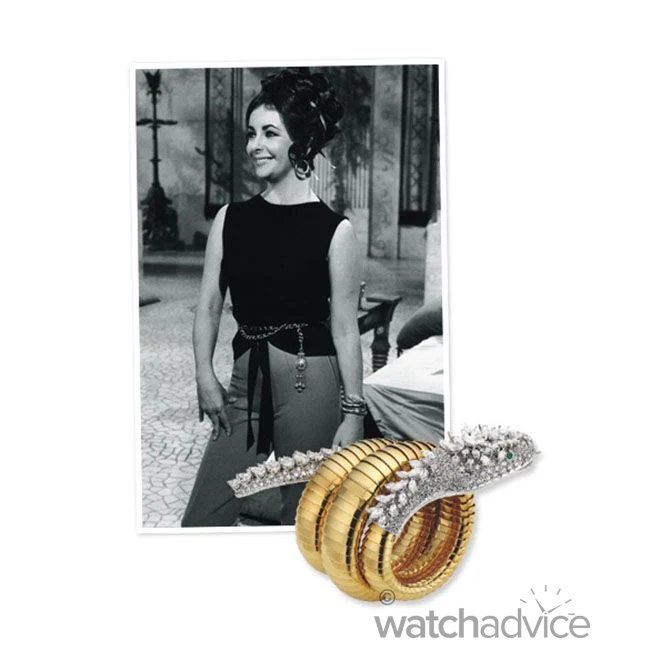
The brand’s Serpenti collection was unveiled in the 1940s, and it quickly became an icon of sensual design and symbolic power. The unmistakable snake-inspired design of the Serpenti would go on to be worn by cultural icons like Elizabeth Taylor and has been reimagined in countless iterations, especially in 2025, as it is the Chinese Year of the Snake Zodiac.
Bvlgari’s leap into men’s watches came in 1975 with the release of the Bvlgari Bvlgari, and this was when the brand made a serious mark in the world of horology. Bvlgari worked alongside the world-renowned watch designer Gérald Genta to create the Bvlgari Bvlgari timepiece. The now-iconic watch featured a sleek round case with the “BVLGARI BVLGARI” double-logo engraving on the bezel. This design, inspired by Roman coins, became a symbol of minimalistic luxury and helped to cement the brand’s horological design language.
Today, Bvlgari has transcended from being just a prestigious jewellery maker to now being a watchmaker with full vertical integration: an in-house movement division, and a track record of creating timepieces with record-breaking innovation. Whether it’s the sculptural elegance of Serpenti, the architectural boldness of the Octo, the nostalgia of the Bvlgari Aluminium, or the timeless and minimalistic approach of the Bvlgari Bvlgari, each of these different collections is tied together by a singular vision, one that is innovative, bold, and Roman at heart!
Signature Timepieces of the Roman Maison
Bvlgari has proven time and time again that creative watchmaking doesn’t always have to follow the rules set in the Swiss valleys. With a keen eye for architecture, great proportioned sizes, and bold designs that are rooted in Roman culture, Bvlgari has developed a stunning portfolio of timepieces that don’t just tell the time, but make a statement that leaves a lasting impression.
Each of Bvlgari’s signature collections takes on a different approach to form and function, from the serpentine bracelets that coil like jewellery to the ultra-thin record-breaking movements of the Octo Finissimo that redefine the limits of mechanical watchmaking. Bvlgari has carefully executed each collection so that they aren’t variations of the same theme, but rather independent expressions of what luxury timepieces can be, seen through the lens of Italian creativity and world-class watchmaking talent.
Serpenti Collection
Bvlgari’s Serpenti collection is one of the lines that are instantly recognisable, even from some distance. The timepiece was first introduced in the late 1940s, with the Serpenti taking the form of a coiled bracelet watch. The watch was inspired by, as the name suggests, the serpent, a powerful symbol of transformation, rebirth, and seduction.
As the decades went on, the Serpenti collection evolved to be two separate lines within the main collection. While the modern Serpenti Seduttori was designed for everyday wear and modern elegance, the Serpenti Tubogas’s distinctive construction made the timepiece an icon and retained the heritage design from which the Serpenti was born. The Serpenti Tubogas bracelet would wrap fluidly around the wrist without hinges or soldering, giving the timepiece a futuristic design while also showcasing Bvlgari’s jewellery expertise.
What makes the Serpenti collection so unique is in how it blends Bvlgari’s high jewellery aesthetics with horological functionality, a bold fusion that certainly continues to evolve. And that it certainly has done over the decades. Bvlgari has constantly reimagined the Serpenti collection in new forms, even more so this year. At the start of the year, during LVMH Watch Week 2025, the watch enthusiasts were treated to a brand new edition of the Seduttori and Tubogas collections, with the stunning timepieces staying true to their heritage designs.
RELATED READING: Bvlgari & MB&F Reimagine Time With The Stunning Serpenti
Then came arguably the most daring and bold Serpenti creation to date. Bvlgari reached out to the audacious watchmaker MB&F to once again collaborate and create something breathtaking. The two brands banded together to create the Bvlgari X MB&F Serpenti collection, a truly unique take that still stays true to the design language of both companies. Upon its release, it left the world of horology in awe, and rightly so, as it reimagined the Serpenti not just as a watch, but as a sculptural kinetic work of art.
Serpenti Tubogas
The Serpenti Tubogas is arguably the most iconic expression of the collection. The Tubogas is a design that perfectly combines watchmaking with high-jewellery. The Tubogas technique, known as a method for creating flexible, seamless metal bands, is often used in jewelry like bracelets and necklaces and involves wrapping long strips of metal around a core without soldering. Taking this as design inspiration, the Tubogas technique was revived in jewellery by Bvlgari in the 1940s, leading to the creation of the Serpenti in the late 1940s.
This version of the Serpenti directly represents the mythology of the serpent: mysterious, sensual, and bold. Over the years, the Serpenti Tubogas has evolved with modern creations that include double-wrap bracelets to diamond-set cases and colourful dials; however, the essence of the timepiece remains unchanged. It is arguably the most iconic Bvlgari timepiece, merging the maison’s Roman heritage with almost a futuristic design.
Serpenti Seduttori
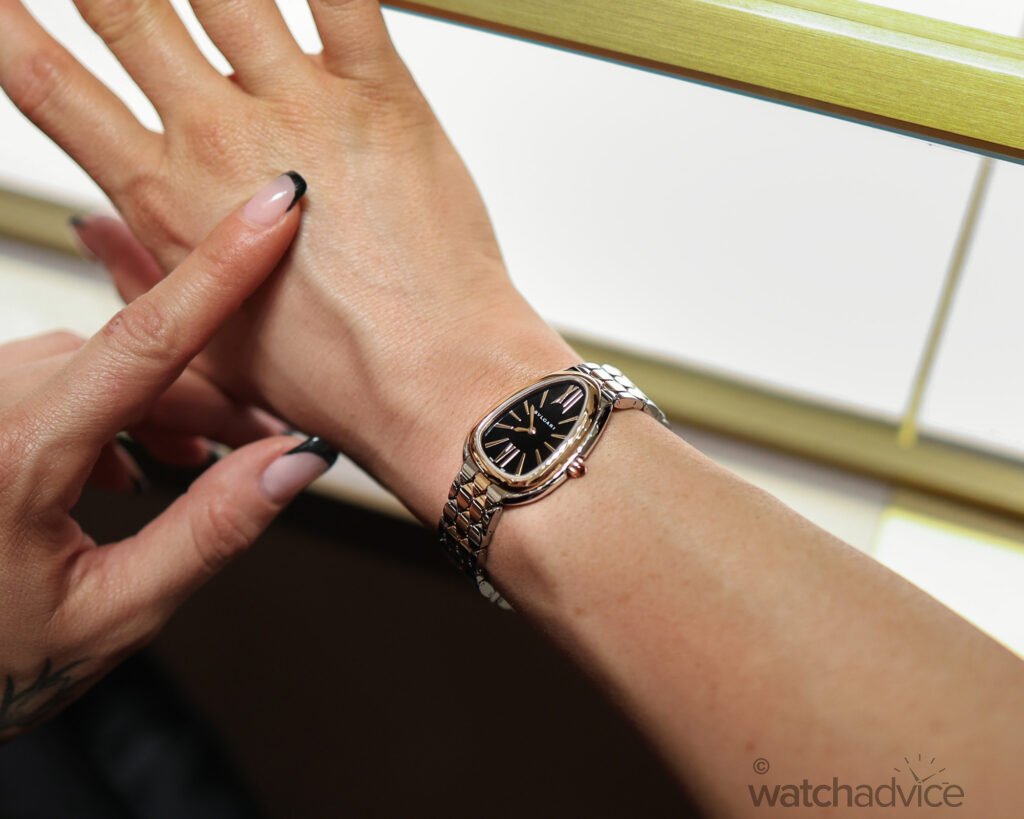
Bvlgari launched the Serpenti Seduttori in 2019, with its introduction marking a brand new chapter for the Serpenti family. This collection was different; it focused less on the coiling form of the bracelet and more on creating a refined, ultra-wearable dress watch. The Seduttori collection, however, is still inspired by the serpent motif, with the “head” of the watch still featuring the signature serpent head design. The collection introduced a streamlined, integrated bracelet with a slimmer design, which makes it very versatile for everyday wear.
Seduttori, which translates to “seductive” in Italian, lives up to its name as the collection offers a softer approach to the iconic Serpenti design without losing the aesthetic presence. The collection is offered in a variety of materials, including diamond-paved versions, catering to modern elegance. This is a collection that’s designed to not just be worn, but also make a lasting impression, one that is discreetly powerful but also glamorous.
Bvlgari Bvlgari Collection
The Bvlgari Bvlgari collection was first introduced in 1975, and it marked a major pivotal moment for the brand. This timepiece is celebrating its 50th anniversary this year, and five decades on, it remains one of the most recognisable and enduring watch designs in modern luxury. The Bvlgari Bvlgari was the brand’s official introduction to the world of men’s timepieces. As mentioned previously, the collection was designed by none other than Gérald Genta, the genius behind creations such as the Audemars Piguet Royal Oak and Patek Philippe Nautilus.
For the design of the Bvlgari Bvlgari, Gérald Genta drew inspiration from inscriptions found on ancient Roman coins. These coins would have the emperor’s name engraved around the edge to signify power and legacy. Gérald Genta then took this concept and reinterpreted it on the bezel, with the double “BVLGARI” engraving becoming a defining symbol, and making the collection instantly recognisable, much like the Audemars Piguet and Patek Philippe designs.
The Bvlgari Bvlgari collection embraces a minimalistic design, with a particular focus on clean lines, legibility, and proportion. This allows the signature bezel design to be the standout feature. Over the years, the collection has evolved, from using different precious materials, dial colours, to even movements with complications. And while these changes have modernised the collection, the core essence still remains: a signature timeless Roman design that showcases elegance with a modern twist.
Bvlgari Aluminium Collection
When Bvlgari first launched the Bvlgari Aluminium collection in 1998, it was unlike anything else in the world of watchmaking. While other high-end luxury timepieces were made from steel or precious metals, Bvlgari decided to break the rules by releasing a timepiece made from aluminium and rubber, two materials that were more in common with sports or tool watches. The Bvlgari Aluminium was certainly a bold design and modern for its time.
The timepiece took design cues from the brand’s iconic Bvlgari Bvlgari collection, with the bezel being stamped with the signature “BVLGARI BVLGARI”. Alongside this standout feature, the Bvlgari Aluminium also featured a monoblock aluminium case, a thick rubber bezel, and a matching rubber strap that had an integrated design. While the timepiece perfectly fits into the luxury watchmaking sector, it has a more playful and vibrant appeal with that distinctive Italian touch.
For a brief period in time, the collection was put on hold, but it made a comeback in 2020. This time, Bvlgari made sure its here to stay, as the collection was re-introduced with upgraded mechanical automatic movements and newly designed case construction, all the while staying true to the spirit of the original Bvlgari Aluminium. Now, the Bvlgari Aluminium collection lives on through its core lineup, limited edition creations, and even high-profile collaborations (Ducati edition), showcasing that Bvlgari isn’t one afraid that is afraid to take risks, and sometimes, make the unconventional timeless.
Octo Collection
While the rest of Bvlgari’s collections made their name through bold jewellery design or sensual forms, the Octo collection showcased the brand’s architectural design and mechanical mastery. Bvlgari first introduced the Octo collection in 2012. The Octo features a distinctive case architecture where it has a round bezel with an eight-sided profile that gives it a sculptured silhouette. The aesthetic design of the Octo is sharp and modern, reflective of the groundbreaking movements that lie inside some of the Octo timepieces! Over time, the Octo collection evolved into different sub-collections. Like the Serpenti, the Octo has two separate collections with their own distinctive personality.
Octo Roma Watch
Bvlgari launched the Octo Roma collection in 2012. The collection’s Octo DNA is shown through its bold geometry and Roman-inspired design; however, does feature a more “elegant” design with its softened edges and rounded silhouette. The Octo Roma is the entry point into the brand’s Octo world for many enthusiasts and collectors, with the collection offering everything from the classic time-only models to chronographs, skeletonised dials, and even tourbillon models!
What makes these Octo Roma timepieces unique is how they seamlessly blend Bvlgari’s design language with everyday practicality and wearability. Bvlgari offers the Octo Roma in a variety of materials that range from steel, gold, ceramic, to even sapphire. Where the Octo Finissimo is the playground for Bvlgari to experiment with their crazy innovations, the Octo Roma is the more elegant, wearable, and luxurious collection.
Octo Finissimo Watch
This leads us to arguably Bvlgari’s finest watch collection that has cemented the watchmaker’s place on the list of serious watch manufacturers. The Octo Finissimo, which debuted in 2014, has shattered records and flipped the script on high-horologerie, proving that once again, Bvlgari isn’t just another jewellery brand that dabbles in watchmaking. With the Octo Finissimo’s brutalist design, sandblasted finishes, and ultra-thin cases, the collection brings forth Italian design flair with incredibly complex mechanical movements.
While I’ll need a whole separate article just to deep dive into the technical brilliance of the Octo Finissimo collection, the outline is that Bvlgari has been breaking world records with this collection since 2014. From the world’s thinnest tourbillon, thinnest minute repeater, thinnest automatic watch, thinnest chronograph, thinnest perpetual calendar to the world’s thinnest mechanical watch ever created, this is a collection that kept pushing the ceiling higher and higher on what is possible in mechanical watchmaking. With more than eight records under its belt, the Octo Finissimo didn’t just disrupt the ultra-thin category; it redefined it entirely.
From the mesmerising serpent-inspired designs to architectural case constructions and ultra-thin mechanical records, Bvlgari has carved out a space for itself that very few brands in watchmaking can occupy. The combination of fusion, art and high horology allows Bvlgari to not only appeal to a broader audience, but also stand out in an industry that is often driven by tradition. While others may follow these traditions of Swiss horology, Bvlgari continues to reimagine what luxury watchmaking can be.
As Bvlgari continues to push the boundaries of watchmaking in terms of both design and mechanical ingenuity, one thing remains clear: these aren’t just timepieces anymore, but rather statements of identity. Whether you are a seasoned collector, have a passion for design, or are someone who is just stepping into the world of watches for the first time, Bvlgari offers something truly different. A vision of watchmaking that isn’t just about telling the time, but telling a story with Italian flair.



